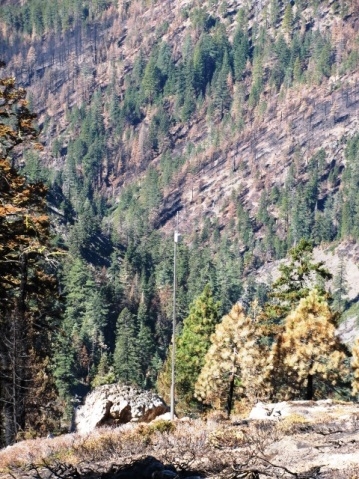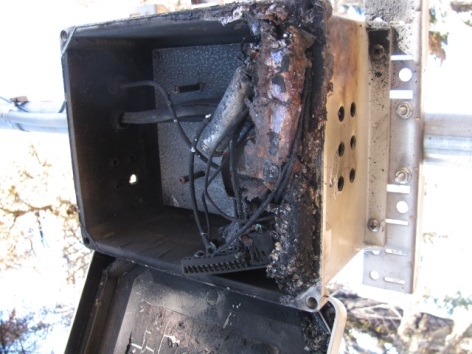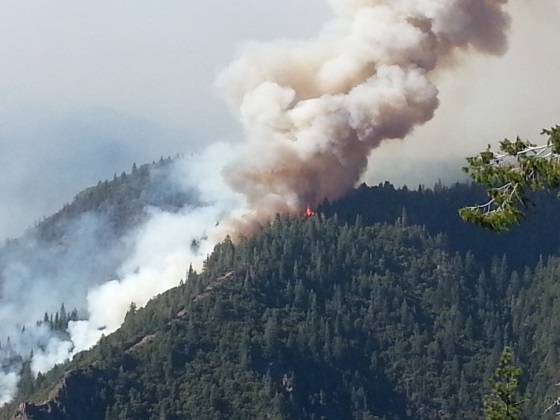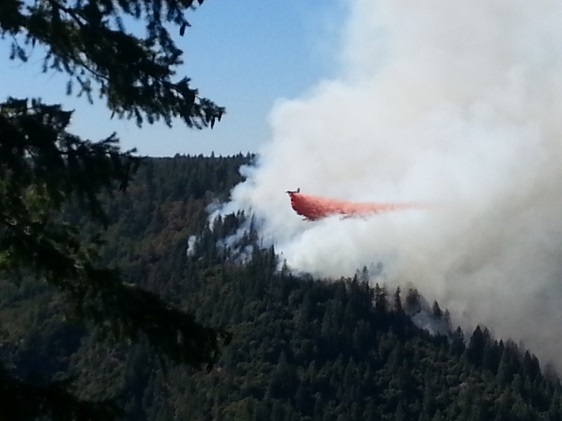On Aug. 10, 2013, a wildfire started in a steep canyon on the Tahoe National Forest. When it was finally declared controlled on Oct. 8, the 'American Fire' as it was named, had burned approximately 27,440 acres, including half (1,100 acres) of the Sierra Nevada Adaptive Management Project (SNAMP) Last Chance study site.
Initiated more than 7 years ago, SNAMP is a collaboration project involving the University of California, UC Cooperative Extension, the US Forest Service, other state and federal agencies and the public that explores the effects of fuels reduction or thinning projects conducted by the Forest Service on forest health, fire behavior, water quality and quantity, wildlife (California spotted owl and Pacific fisher) and public participation. Scientists are using data collected from treated and untreated areas to model potential impacts of forest management. For example, fire modeling is being done to simulate what could happen in the event of a fire on the landscape. All of the science teams are integrating their results to provide forest managers with information that is relevant at the fireshed scale for future projects.

After the American Fire ignited west of the SNAMP study site, American River Ranger District staff ordered all science teams working in the area to evacuate. They removed several of the water team's wireless nodes that were threatened, along with the stream level monitoring equipment. They covered other equipment with fire blankets and bulldozed a defensive line around a meteorological station to keep the fire out of the immediate area.
Parts of the treated and untreated study areas in the Last Chance project, including completed thinning and prescribed burning units, were burned in the American Fire. Some of this area was intentionally backfired by firefighters to aid in fire management. The vast majority of the treated area burned at low severity with pockets of moderate severity. The decision to backfire through the middle of the Last Chance project was a direct result of the project's location and post-treatment fuel profile.
The final determination of how the vegetation survived the fire will probably not be made for another year since significant mortality can happen much later. There was one active spotted owl nest site on the fire perimeter and it was known to have juvenile owls. The site will be surveyed by the owl team in 2014. As a result of quick action by the US Forest Service, only one of the water team's wireless nodes was damaged by fire.


